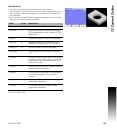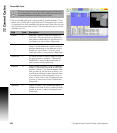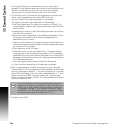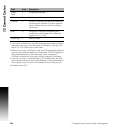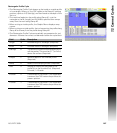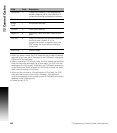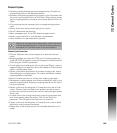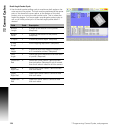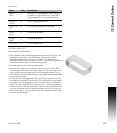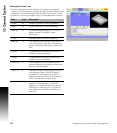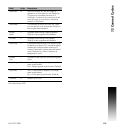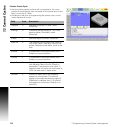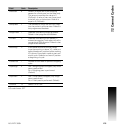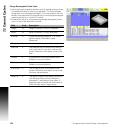
ACU-RITE 3500i 169
7. 2 C a n n e d C y c l e s
Pocket Cycles
Pocketing cycles eliminate extensive programming. One block of
programming mills out the described pocket.
Activate a tool before programming a pocket cycle. All pockets use
the current tool diameter from the Tool Table. When using a course
tool for roughing passes, the course tool must be defined in the Tool
Table.
XY positioning may be necessary prior to programming a pocket
cycle.
Always check that tool-to-corner radii do not conflict.
Z and P dimensions are absolute.
Alarm messages occur if the CNC detects program errors.
Pocket cycles use "built-in" tool diameter compensation.
Stock variable is not permitted and is ignored.
Pocket Cycle Overview:
The tool StepOver value must be equal to or less than the tool
radius.
Roughing passes are climb mill (CCW) only. Finishing passes are
climb mill (CCW) by default, but can be changed to conventional mill
(CW) using the FinishDir parameter.
A finish pass of only side stock will cut the entire ZDepth, unless a
negative DepthCut is specified, which will indicate to finish the side
walls in multiple steps down.
Pocket cycles allow specification of a coarse roughing tool, and to
allow skipping of a roughing pass. The coarse tool allows multiple
roughing passes to be taken.
Mount a smaller tool prior to running the roughing cycle again.
Subsequent roughing passes only remove material left over by the
previous roughing pass. Skipping a roughing pass allows the use of
just the finish pass.
Pocket cycles with the exception of Frame allow the use of finish
cycles. Bottom Finish and Side Finish enable the user to mount
another tool and then remove finish stock by calling the appropriate
finish cycle.
To leave finish stock during the pocket cycles to be removed with
later finish passes, select the option "Yes" for the SkipFinish
parameter. This will leave finish stock but not remove it.
Pocket cycles with the exception of Frame allow the use of island
definitions using the island command.
Please refer to the Islands section for a detailed description of its
usage.
When you cut one pocket inside another, make sure to set
P above the highest pocket. At the end of each pocket, the
tool rapids to P and then rapids to the start position.



